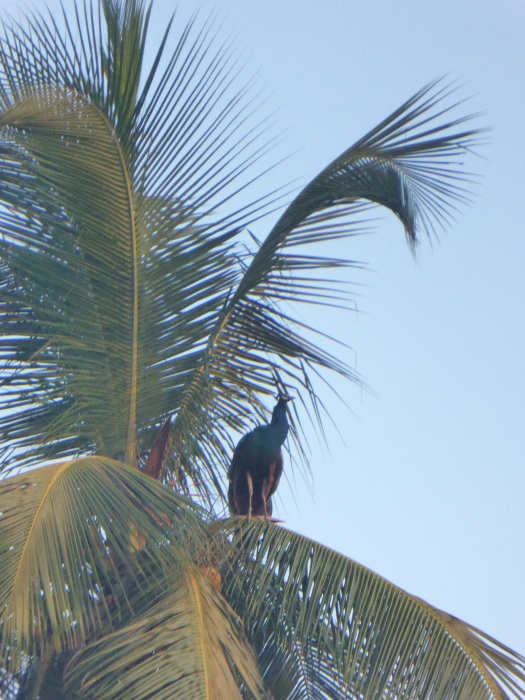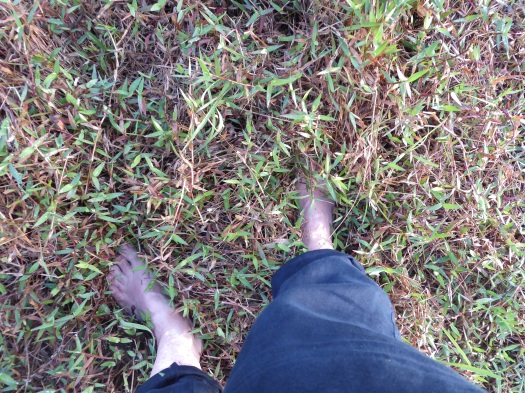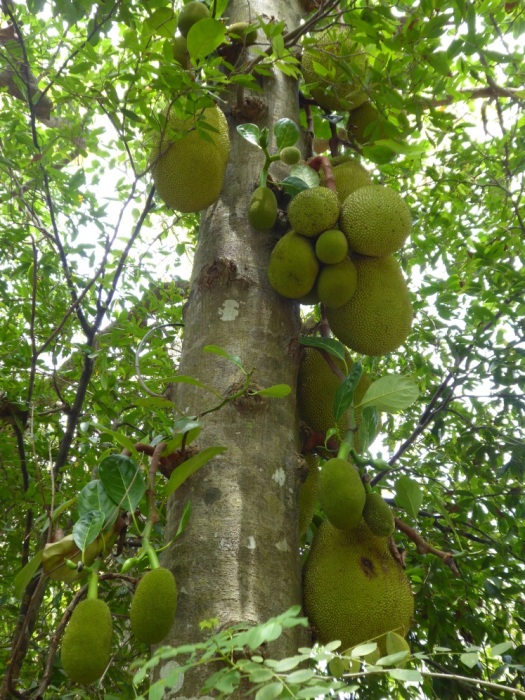20th December 2019
‘The task is to make kin in lines of inventive connection as a practice of learning to live and die well with each other in a thick present.
[…] In fact, staying with the trouble requires learning to be truly present, not a a vanishing pivot between awful or edenic pasts and apocalyptic or satiric futures, but as mortal critters entwined in myriad unfinished configurations of places, times, matters, meanings.’
(Donna Haraway, Staying with the Trouble – Kaking Kin in the Chthulucene)
Establishing a relation with someone or something changes us. It redefines us, inspires and shapes us. It’s risky business…
Arriving in Sri Lanka was an intense overload of chaos, colors, shapes, people, sounds, humans, plants, water in all its forms – and my own body and mind trying to adjust to it all. It took time, effort and curiosity to create meaningful relations.
Early on, the question became how to make myself available for transformative encounters. How to invite them and trust trust them across cultures and the predefined expectations of our different positions as local and foreigner. It was challenging and confusing. Often I wanted to become as invisible as possible, to just blend in with people and plants, to escape my foreignness.
I started relating to the natural entities around me, like mangrove flowers and pods, nuts I found in the beach, leaves, roots, rocks. This was my first step towards establishing more intimate contact with locals. Non-human locals.
In Sri Lanka there is a deep affinity with nature. Initiating my work I discovered that my curiosity and appreciation of growths and beings united me with the people here to bring us, momentarily, beyond the transactional nature of me looking like a tourist and the locals trying to find ways to get by. It was a relief to find shared ground beyond that set of roles.
Shared explorations brought us together in moments of curiosity and appreciation and we could meet. Human to human – and human to other-than-human.
Being the only artist in residence I could not rely on collaborations with other residents, and I had to find new ways of working. First of all I had to move behind the camera to explore through the lens while at the same time relating bodily to the objects and entities I was exploring. These images became sort of relational portraits. Initially only using my own body as a canvas, but after a while building up friendships that could sustain me asking others to invest their bodies, and also ask them to share with me what they found fascinating/beautiful.
I am used to being in front of the camera and sometimes I struggle with my distinctively feminine body and the connotations this brings to my work. Owning and exploring my own gaze on both my own and other bodies, human and other-than-human, opens a new level in my work and in my ways of relating with the entities, I gaze upon. A feminine, relational gaze.
Being introduced to the film workers Douglas Kahan and Tamara Whittle allowed me to move back in front of the camera again for a bodily journey of exploring relating with natural and manmade environments. The work became a contact improvisation of sorts; putting my own body into moving exchanges with the different environments and allowing that to form a dance between all the elements present. Dancing relation.
In the course of my processes and explorations more and more people have gotten involved; Nilanthe who was sharing his knowledge and curiosity of the garden and jungle with me in very limited english, and who was the first to let me borrow his arm and skin for fotos. Doctor Priyantha Udagedara, visual artist and professor at the University of Visual and Performing Arts Colombo and the 1 year diploma students with whom I went on a mind-blowing field trip to the rainforest of Ritigala. The local print shop owner Saman who was extremely dedicated in helping me edit, compose and print the photos I have done – and who in the course of that became my friend. Douglas and Tamara with whom I did the video journey and had a truly inspiring collaboration. Nalinda who challenged his skills as a traditional woodcarver created beautiful sculptures in Mahogany and Attonia woods based on nuts and seeds that I found on the beach. Tharu who has been teaching me to surf and who agreed to help me explore images of body and rocks with him. My friend Dinith Ashan and mr. Abé at the Eco Village in Dodanduwa which is the most magical place I have seen, and where I spent beautiful, inspirational time and created some of the video. Neil and Maria at Sun Beach in Hikkaduwa, who have been part of the whole process.
If nothing else, the relations that have formed and the ways we have bonded in the course of my work is in itself an eclectic, mosaic-like work of art. The relations are the true work of art. The pieces that came out of this are testaments to that.
NATURAL INTIMACY
A series of photographic inkjet prints documenting intimate bodily encounters between humans, skin and things that grow. Shot in Hikkaduwa, Dodanduwa, Ritigala and Sigeriya with the bodily assistance of Nilanthe, Usha, Emasha, Rushan, Tharu, Frederic and Una.

Printed and edited in collaboration with Saman Samarawickrama Studio, Hikkaduwa
WASHED UP ON THESES SHORES
A series of wooden sculptures based on nuts and seeds washed up by the sea. The sculptures are made in local wood types Mahogany and Attonia in collaboration with woodcarver U. D. Nalinda.
The objects examine, in an aestheticized way, the process through which something mundane, washed up, is given new value and meaning through curiosity, appreciation, attention, time and effort which all lend it new significance through relating to it and thus inscribe it in a new story.


BLENDING IN (STANDING OUT) (video)
A contact improvisation with human- and non-human environments and their inhabitants exploring blending in, standing out and coming together. Filmed on location in Hikkaduwa and Dodanduwa, December 11th, 2019 at Hikkaduwa Beach, Ranjith’s Hut, Salty Swamis, the train tracks, Eco Village and Dodanduwa Beach.
Video: Douglas Kahan and Tamara Whittle – SpaTv Productions
Bodywork: Nana Francisca Schottländer
Edit: Nana Francisca Schottländer


SYNTHESIS (video)
A small video piece unfolding around the body-like rocks of Dodanduwa Point, a human body, the waves and a large piece of semi-transparent, synthetic fabric bought at the fabric market in Colombo. Filmed on iPhone 6 at Dodanduwa Beach, December 2019.
Bodywork: Frederic Collette
Video and edit: Nana Francisca Schottländer

THANK YOU:
Sura Medura Arts Residency, Neil Butler, Maria McCavana, Københavns Internationale Teater, UZ Arts, In Situ Network, Ashan Dinith and Eco Village Dodanduwa as well as the staff at Sun Beach Hotel, Hikkaduwa and Soul Villas, Dodanduwa.
18th November 2019
My days here are so full of impressions. And weirdly random. Lacking an ordering principle I am adrift. A foreigner in a foreign landscape.
At Dodanduwa fishery harbour: A full moon dancing ritual where a troupe of dancers whirled for fishing luck, good weather and incoming money for the fishermen from 8 PM to 5 AM. The dancers and the drummers making their way through intricate rhythms and patterns, offering incense, fire and sweat to the gods in exchange for good fishing fortune. The open walled roof had been transformed into a shrine made from palm leaves and trunks, braided, woven, stuck together to form a sacred space for the ritual to take place. It was teeming with spectators: all ages, all sexes, no tourists. But the ritual was not for them. It was for the gods. And they were witnessing it. As were we. All together.

As the evening proceeded and the dancers went through trances, acrobatics, fire-whirling, bantering, clowning, sex-changing and a whole array of different costumes and props, people watching fell asleep in the plastic chairs. First the children and the elderly, but in the course of the evening people slumped over, still impregnating the ritual with their sleeping presence. Offerings of black tea and crackers revived us momentarily. At 4:30 I had to give up and walk along the empty road towards home until I caught a ride.
At the University of Visual and Performing Arts in Colombo, making a work presentation and talk. Mainly to students from the department of dance. It made sense to show my work to them. To talk about bodies, moving bodies, other-than-human bodies and how we can dance and choreograph spanning species and modes of existence. Talking to the professor, Udagedara Priyantha, about paradise – the historical, the mythical, the lost. Made me think of paradise re-created. What would that be? What would it take?
I will go to the woods near Sigueriya with him and the painting students for 3 days to work in the forest. In paradise….

My nights by the ocean are dark and sweaty. The sound of the waves penetrating my dreams. Some nights I am scared. The ocean sounds too close, menacing somehow. Other nights I am falling into the constant of it. But I relish in the lush quietness by the lagoon. Here my thoughts come together, I find space to breathe, explore, sense. Unfold. Like all the plants.

I realize that it is as much my own reservation as the expectations of others, that separate me from people here. I find it hard to accept my privilege, what it makes of me here. I am almost ashamed of it. No feeling of entitlement, on the the contrary. Wanting to hide, blend in, disappear in the masses.
I am trying to slide into my encounters, trusting that the people I meet are exactly right. Without knowing yet, what meaning we will create together. Like Sunil and his wife, who want to teach me to cook coconut sambal.
Each person, each encounter represents a road I can travel down. I have to be the one daring to do so. Curiously. Politely. Honestly.

All these threads, thoughts and words.
Skin tone, camouflage, dance, material explorations, exchanges, encounters, fear, curiosity.
I will try to make the words come together.

| Gahata poththa wagei (ගහට පොත්ත වගෙයි ) | As close to each other as the bark is to the tree trunk. | Describes really close friends/people. |
11th November 2019
Visiting is not an easy practice; it demands the ability to find others actively interesting, even or especially others most people already claim to know all too completely, to ask questions that one’s interlocutors truly find interesting, to cultivate the wild virtue of curiosity, to retune one’s ability to sense and respond – and to do all this politely! […] Curiosity always leads its practitioners af bit too far off the path, and that way lie stories.
[…this] sort of politeness does the energetic work of holding open the possibility that surprise are in store, that something interesting is about to happen, but only if one cultivates the virtue of letting those one visits intra-actively shape what occurs. They are not who/what we expected to visit, and we are not who/what were anticipated either. Visiting is a subject- and object-making dance, and the choreographer is a trickster. Asking questions comes to mean both asking what another finds intriguing and also how learning to engage that changes everybody in unforeseeable ways.”
(Donna Haraway: ‘Staying With the Trouble – Making Kin in the Chthulucene’)
I’ve been here 4 days now.
Landed in the humid night for a drive through the darkness from Colombo to Dodandura. Dogs sleeping like little hairy mounds by and on the road. People getting up before the break of dawn to get ready for a new day’s work.
Arriving to the villa by the lagoon, going to sleep in my mosquito tent.
The next few days exploring: the banks of the lagoon, the fishermen’s harbor and its rocks with crabs, sea urchins and jumping fish. A fishing boat with a swedish prayer for good luck as a name. Local fishermen having a party, drumming, singing and drinking arrack. Wanting to invite me for dinner, for sailing, for walking.
Walking along the coast and home along the train tracks. Everything so lush. So green. So rich. Local women picking jasmine flowers for Buddha, drying their washing on the rocks by the tracks. Dogs, children…
Hello madam, how are you?
How am I?
Everything is foreign, I even become foreign to myself. My skin color sets me apart. Makes me into something other. I struggle with that. Wanting to blend in, to become invisible and quietly make my way around to explore, see, meet, and exchange. Beyond skin color. And money. Trying to find a meaningful point to work from. Maybe it starts with accepting the foreignness, around me and within me.
I found treasures by the lagoon. Seeds, nuts, flowers, shells. I begin by encountering them, body to body, flesh to flesh – spanning species. Making this an entry point. First contact.
My initial idea for the project here is to learn to sing the sound of the water in 3 different locations and then sing the sound of one place to another – ideally together with 3 or 4 others. There are intellectual thoughts and theories behind my project. Eco- and hydrofeminist approaches to species and connectedness. But as I am the only resident here at this time, I have to find ways of involving locals in the project. I’m not sure it will make sense to them. And then what’s the point…?
I want what I do here, to be of value to others.
What can I do? What can I create, which has value to the people here? How can I ask meaningful questions that makes new sense to both me and the people, I encounter?
All these questions. No answers today.
Hopefully the next weeks will bring me closer – to people and answers.

















































































































































































































